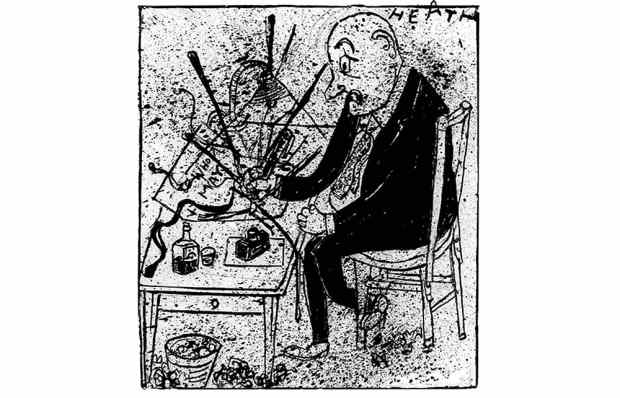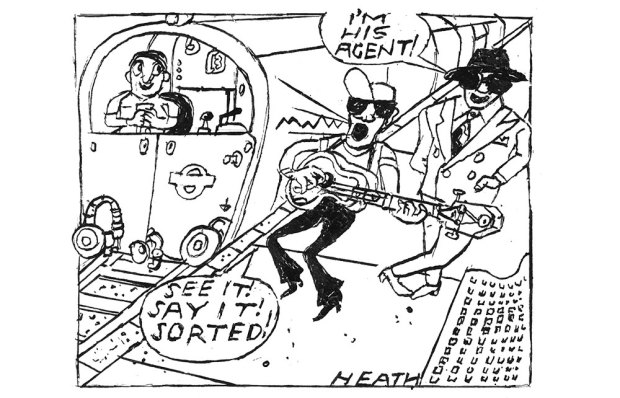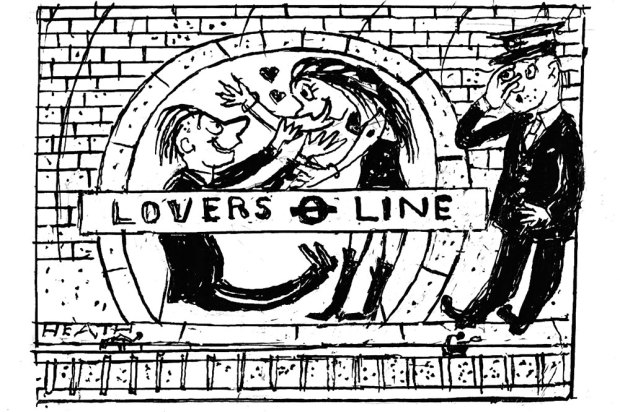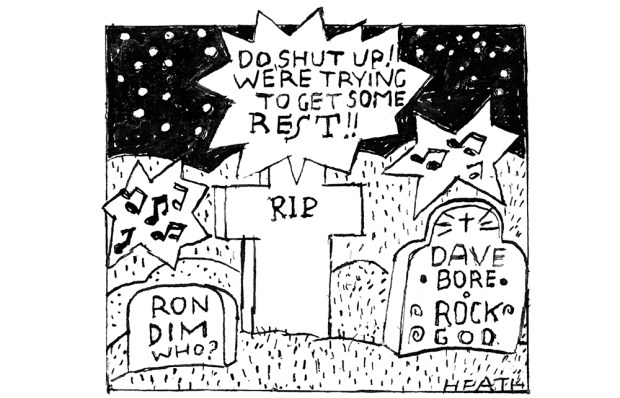Long-distance walking is all the rage these days. There are all-nighters staged by charities, for instance the annual MoonWalk in London, which raises funds to fight breast cancer: participants of both sexes walk marathon and half-marathon routes wearing bras. The outfits might have changed, but when it comes to foot-slogging, long-distance has a long history.
Charles Dickens liked a nocturnal ramble. He did it to combat sleeplessness, and on one particular night in October 1857 walked the 30 miles from his house in Tavistock Square to his country home in Kent. In the essay Night Walks he describes passing Bethlehem Hospital (the psychiatric institution from which we get the word ‘bedlam’), and wondering how different its inhabitants were from the rest of us: ‘Are not the sane and the insane equal at night as the sane lie a dreaming?’ At dawn Dickens would head for a railway station to watch the mail come in. Only when daylight appeared would he feel tired enough to go home and sleep.
Many writers use walking for inspiration. Thoreau said that ‘the moment my legs begin to move, my thoughts begin to flow’. It isn’t just writers, either — Erik Satie composed his music while walking, often at night, and when Paris’s streetlamps were blacked out during the first world war he found it difficult to work.
Another motivation is money. During the 18th and 19th centuries Britain enjoyed a boom in ‘pedestrianism’, the undertaking of long-distance walks for wagers. Originally aristocrats pitted their footmen against each other (please don’t let Jacob Rees-Mogg read this — he might get ideas).
But then along came people who were prepared to do the legwork themselves. In 1788, Foster Powell walked 100 miles in 21 hours, 35 minutes. One of the most celebrated pedestrians was Captain Barclay, who in 1809 walked 1,000 miles in 1,000 hours for 1,000 guineas. That was one mile (the same one, laid out on Newmarket Heath), once every hour from 1 June to 12 July. A crowd of 10,000 turned up to watch. In 1864 Emma Sharp of Bradford copied the feat. People threw red hot coals in her path and tried to trip her up, and for the last two days she carried a pistol for protection. When she finished her supporters roasted a celebratory ox.
Several years ago, hearing of someone who’d taken seven hours to run the London marathon, I thought: ‘I could walk it in that.’ So one autumn day I tried. You always hear about average walking pace being four miles an hour — it’s nonsense. You really have to motor to achieve that, and I only just completed the course in the seven hours. Later, for a book, I walked the whole London Underground system overground. Up to 20 miles, I found, gives you a real buzz. Between 20 and 30 you start to come back down, and much beyond 30 is a real struggle. My longest day’s trek was 39.5 miles. It would have been over 40 if you could walk to Heathrow Terminals 2 & 3: it’s the only Tube station to which you can’t.
Perhaps the most bizarre long-distance walk was accomplished by Albert Speer, who during his time in Spandau prison did more than 2,000 laps of the garden to simulate a walk from Berlin to Heidelberg. Fellow prisoner Rudolf Hess suggested he follow it up with a walk ‘to’ Asia. Speer refused — it would have meant passing through several Communist countries.
Got something to add? Join the discussion and comment below.
Get 10 issues for just $10
Subscribe to The Spectator Australia today for the next 10 magazine issues, plus full online access, for just $10.
You might disagree with half of it, but you’ll enjoy reading all of it. Try your first month for free, then just $2 a week for the remainder of your first year.














Comments
Don't miss out
Join the conversation with other Spectator Australia readers. Subscribe to leave a comment.
SUBSCRIBEAlready a subscriber? Log in